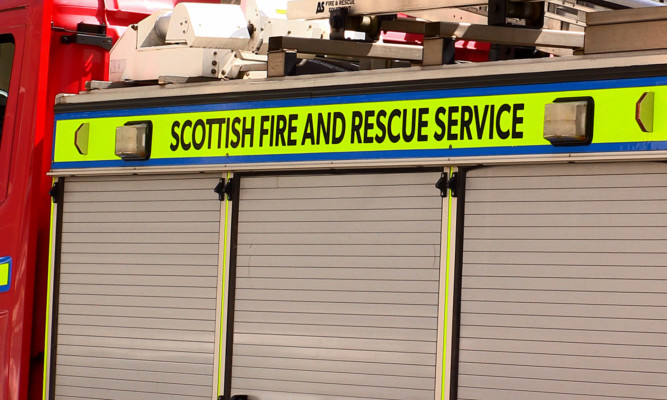A reduction in the number of false alarm calls to the Scottish Fire and Rescue Service has been welcomed.
Recent figures from Audit Scotland revealed that false alarms caused by faulty equipment cost Scotland’s single fire and rescues service close to £20 million in its first year up and running.
The Scottish Fire and Rescue Service attended almost 50,000 false alarms in 2013-14, almost 60% of emergency incidents firefighters across the country responded to.
But while the overall number of false alarms has dropped 12% in the last decade, those caused by equipment malfunction or failure now make up more than two in five of all emergency incidents.
Fife councillor Margaret Kennedy, the Fife Liberal Democrat spokesperson on community safety and chairman of Fife Council’s safer communities committee, said: “False fire alarms are a drain on essential resources.
“Over the years it has proved challenging for Fife’s fire officers to cut their frequency.
“It is hoped that the partnership approach they advocate, enhanced by other outside processes, will continue to reduce the trend.”
Tay Bridgehead councillor Tim Brett said: “I was pleased to learn from Fife Prevention and Protection station manager Steven Michie that over the last six years there has been a 13% decrease in the number of false alarms.
“New buildings and the installation of new systems in the NHS, schools, residential complexes, as well as increased domestic telecare (community alarms), have also increased significantly. So while false alarms continue, encouragingly, they are slowly reducing.
“Steven Michie has advised that the Fire and Rescue Service is continuing to address this issue throughout Fife.”
Figures reported by The Courier last year showed that students burning toast in halls of residences and fire alarms triggered in science laboratories had again contributed to St Andrews University being responsible for the highest rate of false alarm call-outs by the fire service in Fife.
Almost 50% of false alarms attended by firefighters in northeast Fife between April and September last year were to premises in St Andrews with a significant number of those to university halls and other departments.
But the Scottish Fire and Rescue Service said the figures were “nothing to be alarmed about” as they reflected the concentration of university buildings within St Andrews.
The figures for St Andrews must be taken in context and were “not disproportionate” to the dense number of fire alarms present in the town.
